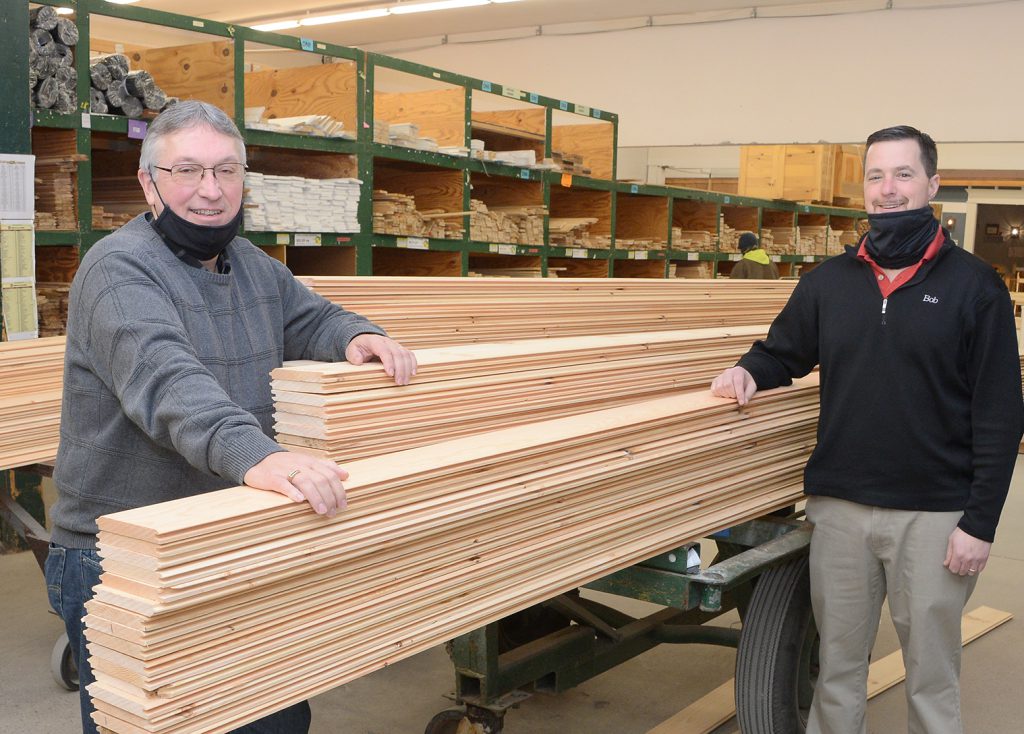
©2021 SaratogaPhotographer.com
By Christine Graf
The timber industry has been dramatically impacted by COVID-19 and according to the National Association of Home Builders, lumber prices have risen by 130 percent since April.
The price increase is attributed to various factors, including supply chain disruptions and material shortages. As a result of the pandemic, many lumber producers were forced to close temporarily or operate at reduced capacity. Social distancing protocol made it difficult for plants to produce at pre-pandemic levels and increased operating costs.
Prior to the pandemic, lumber supplies and pricing had already been impacted by tariffs that were imposed on wood being imported from Canada. The tariffs are as high as 20 percent for treated lumber.
“The import duty or tariff that has been placed on Canadian lumber that is coming into the United States is so high that the Canadians are shipping wood to other areas rather than the U.S.,” said Doug Ford, vice president of sales and purchasing at Curtis Lumber. “The tariff was increased within the last year or two, and it’s put Canada in a position that they would rather sell it to someone else.”
According to Ford, Canadian tariffs and COVID-related slowdowns are not the only causes for skyrocketing lumber prices. Demand for lumber is unusually high due to a single-family home construction boom occurring throughout the country.
“Single-family home construction in the northeast was up 24 percent in 2020. That’s a lot of houses being built,” he said. “The rest of the country is also up double digits as well, but the northeast is leading the way right now.”
Demand for lumber has also increased due to a dramatic increase in the number of home improvement projects that homeowners embarked on during the pandemic. Many homeowners are using stimulus money or money that was budgeted for travel or vacations to make home improvements.
“People are working from home and staying home, so rather than taking a vacation, they are doing things like adding a deck ” said Ford. “That has driven up the usage significantly. And people who are planning on continuing to work from home are adding additional space to their homes. Then you have commercial spaces like restaurants that are adding outdoor space to be able to seat more people.”
The supply shortages and price increases are being felt at all levels of the lumber industry.
Al Petteys, owner of A. Petteys Lumber, operates a sawmill and lumber yard in Fort Ann. The sawmill and lumber business is considered essential, and he was able to keep his sawmill open and his three employees working throughout the pandemic.
The cost of his raw materials increased by 20 percent, forcing Petteys to increase prices by the same amount. Despite the increases, he saw increased demand for products during the summer.
“We sold a lot more because your regular lumber yards (prices) were so high and people were looking to get it somewhere cheaper,” he said. “Rough lumber is cheaper than lumber you would get somewhere like Lowes or Home Depot. Every time lumber passes hands, the middle men gets another hand in it.”
Although business has slowed because of winter weather, Petteys has yet to see raw material prices decline. He is concerned that the recent shut down of the Keystone Pipeline (an oil pipeline system in Canada and the United States, commissioned in 2010) will lead to additional price increases.
At Burgoyne Lumber and Hardware in Hudson Falls, general manager Dave Nester said prices have increased for almost all building materials. Lumber prices have seen the most dramatic increases. As an example, he said the price of some types of spruce have almost doubled. The cost of plywood has risen by more than $10 per sheet.
“It’s a whole new world out there right now,” said Nester. “Because of COVID-19, there is a shortage of employees at mills and suppliers. There is now a shortage of materials out there which is causing the price of lumber and other building materials to be astronomically high right now. And to find product is a real chore. I spend three hours of my day trying to find something that used to take five minutes to find. It’s horrible.”
Shipments have been delayed and delivery estimates have become increasingly unreliable. This impacts not just lumber but many additional building materials. Nester listed roofing shingles and fiberglass insulation as examples of other products that are difficult to procure.
“The supply chain is fragmented, and we are seeing lead times from three weeks to eight weeks,” said Ford. “It’s very unpredictable and we can’t count on product arriving at a certain time.”
Despite the price increases, lumber sales have remained strong and demand continues to outweigh supply. At both Curtis and Burgoyne, high lumber prices have not resulted in slowed sales.
“Lumber is up almost double what it was a year ago, and in some particular cases, more than that,” said Ford. “The ironic part is that our sales were up last year. That’s because we sell product that goes into homes, and that’s what people are spending their money on.”
Both Ford and Nester said its important for customers to understand that lumber yards have no control over the prices. They have no choice but to pass on the increases to the consumer.
“People complain about the price, which I understand,” said Nester. “But it’s not price gauging on our end of the business.”
